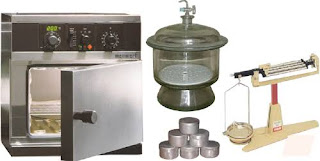Determination of Sulphated Ash

Determination of Sulphated Ash
Sulphated ash, also known as sulfate ash or ignited ash, is a crucial parameter in various industries, especially in the pharmaceutical, food, and chemical sectors. This article explores the determination of sulphated ash, its significance, methods for analysis, and its applications.
What is Sulphated Ash?
Sulphated ash refers to the residue left behind when a sample is ignited to remove all the organic matter. It is expressed as a percentage of the original sample’s weight. The determination of sulphated ash is a fundamental analytical process, ensuring product quality and compliance with industry standards.
Importance of Determining Sulphated Ash
The determination of sulphated ash is essential for several reasons:
- Quality Assurance: It is a critical quality control parameter in various industries, ensuring that products meet specified standards.
- Regulatory Compliance: Many industries are subject to regulatory requirements that mandate the determination of sulphated ash.
- Assessment of Purity: It helps assess the purity of raw materials and finished products.
Equipment :
1. Silica or Platinum crucible.
2. Desiccator.
Procedure for Determination of Sulphated Ash:
Heat a silica or platinum crucible to redness for 10 minutes, allow to cool in a desiccator and weigh.
Take 1.0 gm of the substance and weight the crucible .
Ignite, gently at first, until the substance is thoroughly charred.
Cool, moisten the residue with 1 ml of Sulphuric acid , heat gently until the white fumes are no longer evolved and ignite at 8000 ± 250C until all black particles have disappeared.
Conduct the ignite in a place protected from air currents.
Allow the crucible to cool, add a few drops of Sulphuric acid and heat.
Ignite as before, allow to cool and weigh.
Repeat the operation until two successive weighing do not differ by more than 0.5 mg.
Calculating Sulphated Ash Content
The sulphated ash content is calculated as a percentage of the initial sample weight.
Sulphated Ash (%) = (Weight of Ash / Weight of Sample) × 100
Factors Affecting Sulphated Ash Determination
Factors Affecting Sulphated Ash Determination:
- Contaminants: Impurities in the sample can skew results.
- Temperature Control: Precise heating is essential for accurate ash determination.
- Sample Homogeneity: Non-uniform samples can yield inconsistent outcomes.
- Crucible Quality: The type and quality of crucibles used can impact results.
Applications of Sulphated Ash Determination
The determination of sulphated ash finds applications in various industries, such as pharmaceuticals, food, and chemicals, where product quality is paramount. It is crucial in:
- Pharmaceutical drug manufacturing
- Food and beverage production
- Environmental monitoring
FAQs
1. Why is sulphated ash determination essential in the pharmaceutical industry? Sulphated ash determination is critical in pharmaceuticals to ensure the purity and safety of drug products.
2. What is the significance of the gravimetric method in sulphated ash determination? The gravimetric method is highly accurate and suitable for a wide range of samples, making it a preferred choice in many industries.
3. Are there any regulatory standards for sulphated ash determination in the food industry? Yes, regulatory bodies often set standards for sulphated ash determination to ensure food product quality and safety.
4. What challenges can be encountered when determining sulphated ash in complex samples? Complex sample matrices, contaminants, and the need for precise temperature control can present challenges in sulphated ash determination.
5. How can sulphated ash determination benefit environmental monitoring? Sulphated ash determination can help assess environmental pollution and the presence of harmful substances, contributing to better environmental management.
Also, Visit:
B. Pharma Notes | B. Pharma Notes | Study material Bachelor of Pharmacy pdf
